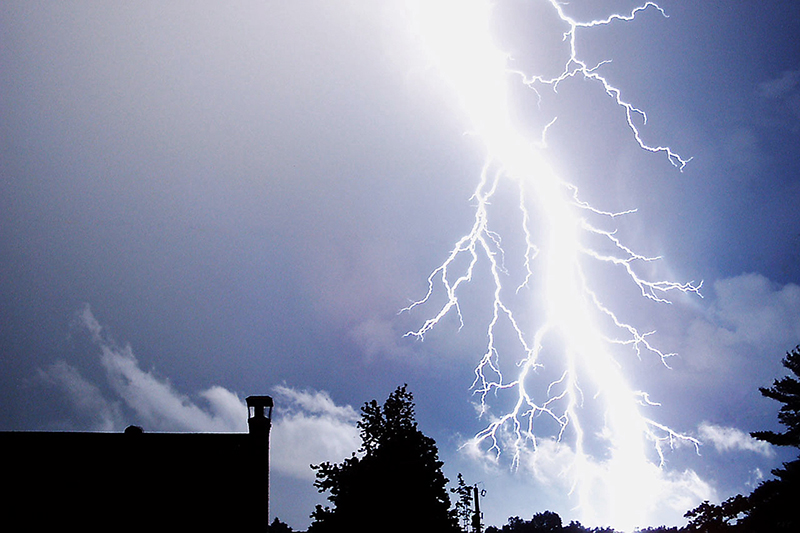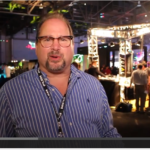
The 2019 summer concert season has come and gone, and touring productions in North America are heading indoors for the colder months. So while we’re basking in the success of everything that went right, it’s also a good time to think about how we can make sure the 2020 touring season raises the bar even further in terms of performer, crew and audience safety.
As both an amateur weather watcher and a guitar player in a performing band, my concern is that we all continue to “play it safe,” not just for the next touring season, but for many more to come. As an Ambassador for the Weather-Ready Nation (WRN) initiative of the National Weather Service (NWS) and a Skywarn spotter for the Pittsburgh NWS, I think we as musicians owe it to ourselves and our audience to look out for everyone. The ultimate goal is to make every performing artist and their crews weather-ready.
We engage in something of a “performing arts crap shoot.” This is especially true with outdoor concerts. You might book the event months in advance. But there is no reasonably reliable weather forecast more than a few days in advance. Roll the dice? Really? Everywhere in North America has a far greater risk for thunderstorms and lightning during peak concert season than other possible weather threats. We ignore these things at great personal risk.
Risks vs. Rewards
Yes, we want the gig. We want to play the big venues, for large numbers of spectators, and to get that essential exposure that moves us up the ladder of recognition regionally. We want to play on through the worst Mother Nature throws at us and show our toughness. Great. The other side of that is what we really do not want exposed to — the very real dangers of spring/summer weather. (I am also a lightning strike survivor, and it is no joke.)
Thunderstorms happen. Rain alone can destroy thousands of dollars of performance gear in an instant. The sound of “bacon frying” is the usual result when a burst of rain lands on the uncovered mixer and other electronics. A fully covered stage with three sides enclosed, and a building to cover all gear at the sound operator’s location for that situation, is often the best we can get.
Worse yet is lightning. By definition the two go together — if you hear thunder, there has been a bolt of lightning somewhere relatively close. If you see lightning, there will be thunder evidence soon thereafter. The good news is that if you hear the thunder, the bolt missed you and your electronics. Yet you are still at risk for another anytime within the following 30 minutes. Like the bullet from a gunshot, you never hear the one that hits you. And open-faced stages offer zero protection from either bullets or lightning.
There is an option.
According to the best safety information available via the National Weather Service, from the instant you hear ANY thunder whatsoever, you are in real danger for at least the next 30 minutes. Period. End of story. The motto of lightning safety is simple: “When Thunder Roars, Get Indoors.” It can save your life, and the danger exists until 30 minutes after the final thunder is heard.
Bolts from storms can be miles apart, ahead of or behind the parent clouds. If you hear it, the bolt was within 10 miles. Storms can line up along a “front” that stretches for hundreds of miles — putting anything in the path in danger from downbursts of hurricane-force winds, circuit-frying rains, and millions of volts of both positive and negative lightning strikes.
Without getting into all the math involved to determine exactly where the lightning was, if you heard it, there might be another right across your fret-board the next time, and soon. Doing the gig is not worth your life. If you hear thunder, it is your responsibility as a performer to “call it” (even if only a 45 minute “rain delay”) until playing safely is again possible.
First-Hand Experience
Lightning is a subject near and dear to me, because of my contact with it. In fact, I was actually indoors when the bolt hit nearby outside. By standing on a concrete basement floor at the time, I experienced what is known as “ground current” from the bolt, which can travel hundreds of feet in any direction, and potentially kill whatever it passes through. [Learn about the five (5) ways you can feel the jolt here: plsn.me/5jolt. In short, even a storm shelter should meet certain criteria — and the NWS has information to help event planners every step of the way.
The Weather-Ready Nation program has a full lightning safety package geared toward any outdoor event organizer. It looks worse than it actually is to implement. The most important aspects of any safety plan are simply matters of forward thinking, along with having people responsible for making decisions in a hurry when it counts. Some of the key points include:
- Getting connected to a reliable source of information (i.e. weather service alerts during events, and having a gadget known as a lightning detector as part of the band’s gear makes you part of the decision-making team);
- Directing spectators and performers to safe shelter fast when a decision is made to get out of harm’s way;
- Reopening the event only after storms have passed safely away from the area.
An example of one weather plan is here: plsn.me/wplan. This is a reasonable way that any event promoter could deploy a weather plan.
For those who want to go into full storm-prepper mode, take time to review the lightning safety planning document from the NWS at plsn.me/NWS. Event promoters should be given the link to this document, with the suggestion they implement it for their outdoor events.
As a musician (or baseball player for that matter), who wants more information on event planning that includes “weather ready” aspects, let me know. Skywarn and many other training programs are available locally around the nation. (As the local Ambassador for the WRN initiative in this area, I’m clued in as to what is coming soon, and will gladly share the info.)
As a performer, do not be afraid to ask an event promoter if their event has a weather-safety component built in, and for directions to certifiably safe shelters at the venue. If you are on stage when the call is made, you may be asked to encourage the audience to “walk that direction” or whatever. Also, you can matter-of-factly request, and include in your performance contract, aspects of the deal that cover contingencies, requirements for safety, and etc.
It’s not about being a prima-donna or a sissy. When the safety of you, your fellow performers, or the audience is in question, you should reserve the right to cancel or delay any event until such time as any threats to your safety are resolved to your satisfaction.
Other Electrical Hazards
Safety on stage involves having a dry stage — electricity and water never mix, and any rain at all on the surface is a hazard. Fingers on guitar strings plus lips touching a microphone while standing on a wet stage can be as almost as deadly as lightning. There are many other possible hazards that any reputable event promoter should prevent as part of the project. Hazards should be dealt with. If not, you are at risk.
The annals of concert history have many pages dedicated to the disasters that have taken place. From wind-driven stage collapses to lightning in sports coliseums, stuff happens. Do your best to make sure it does not happen on your watch, or to you. When thunder roars, get indoors. You can pick up where you left off an hour, or even a year, later. At least everyone will be alive to discuss it. Plan carefully and play it safe during the summer months. And keep on having fun.
Guitarist Aaron Bolinger is an ambassador with the NWS Weather-Ready Nation program. More info at www.weather.gov/wrn.


